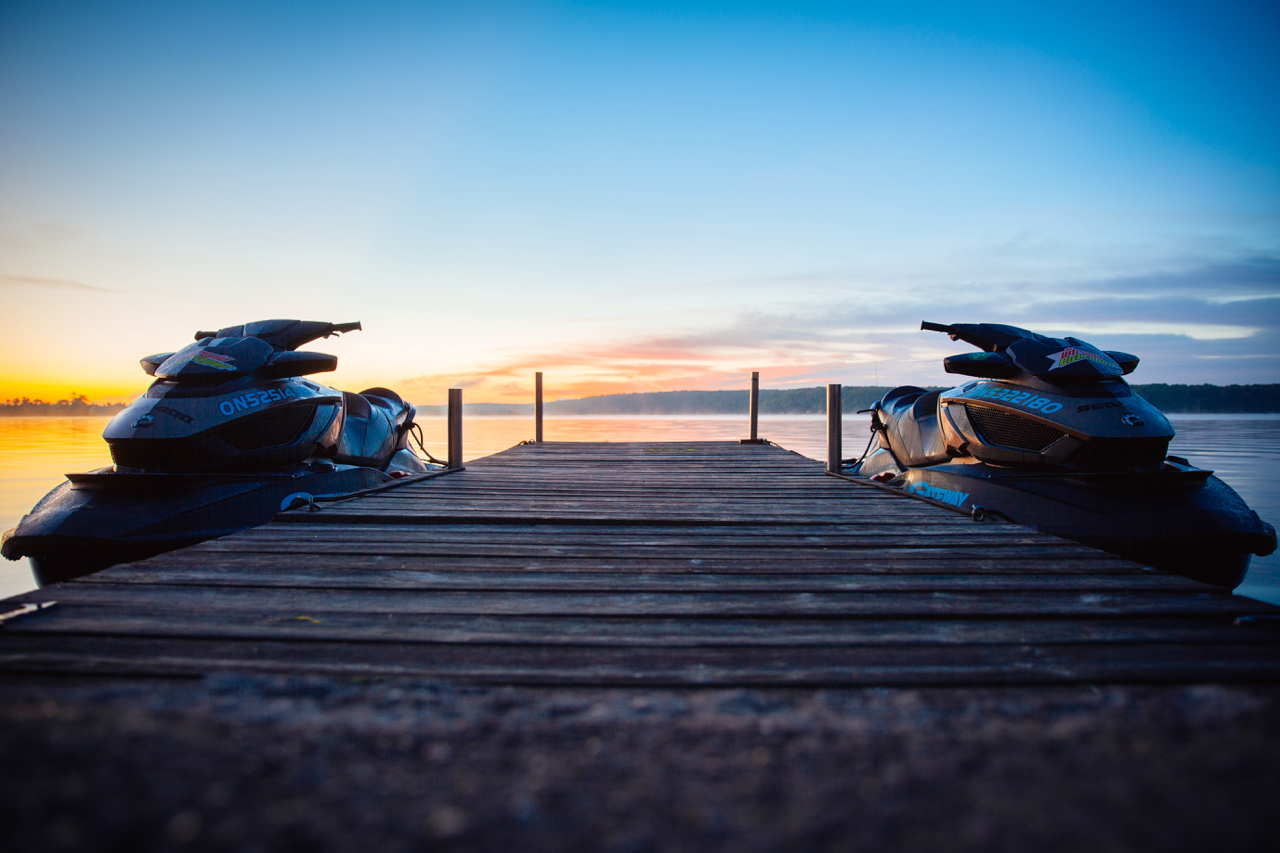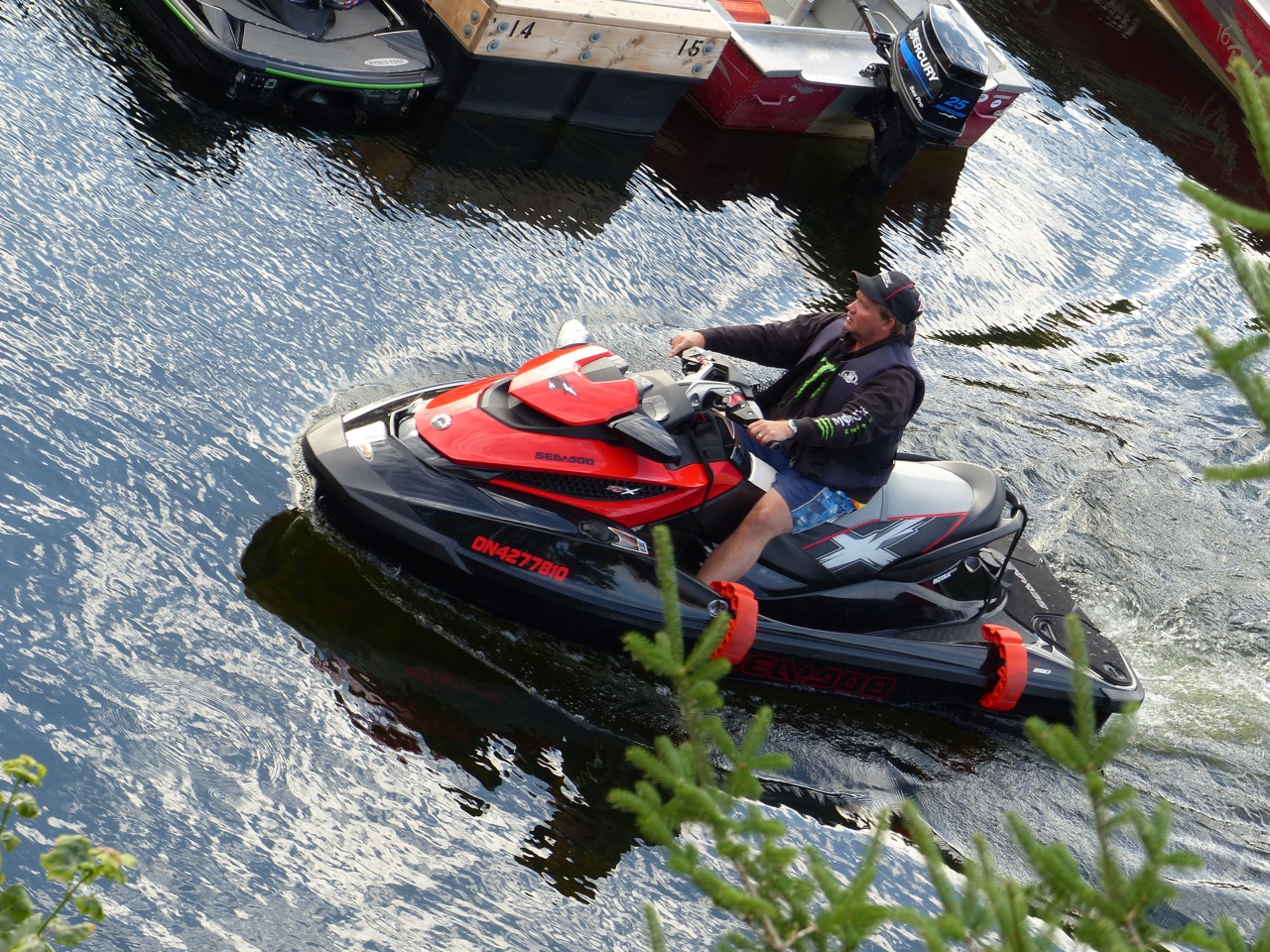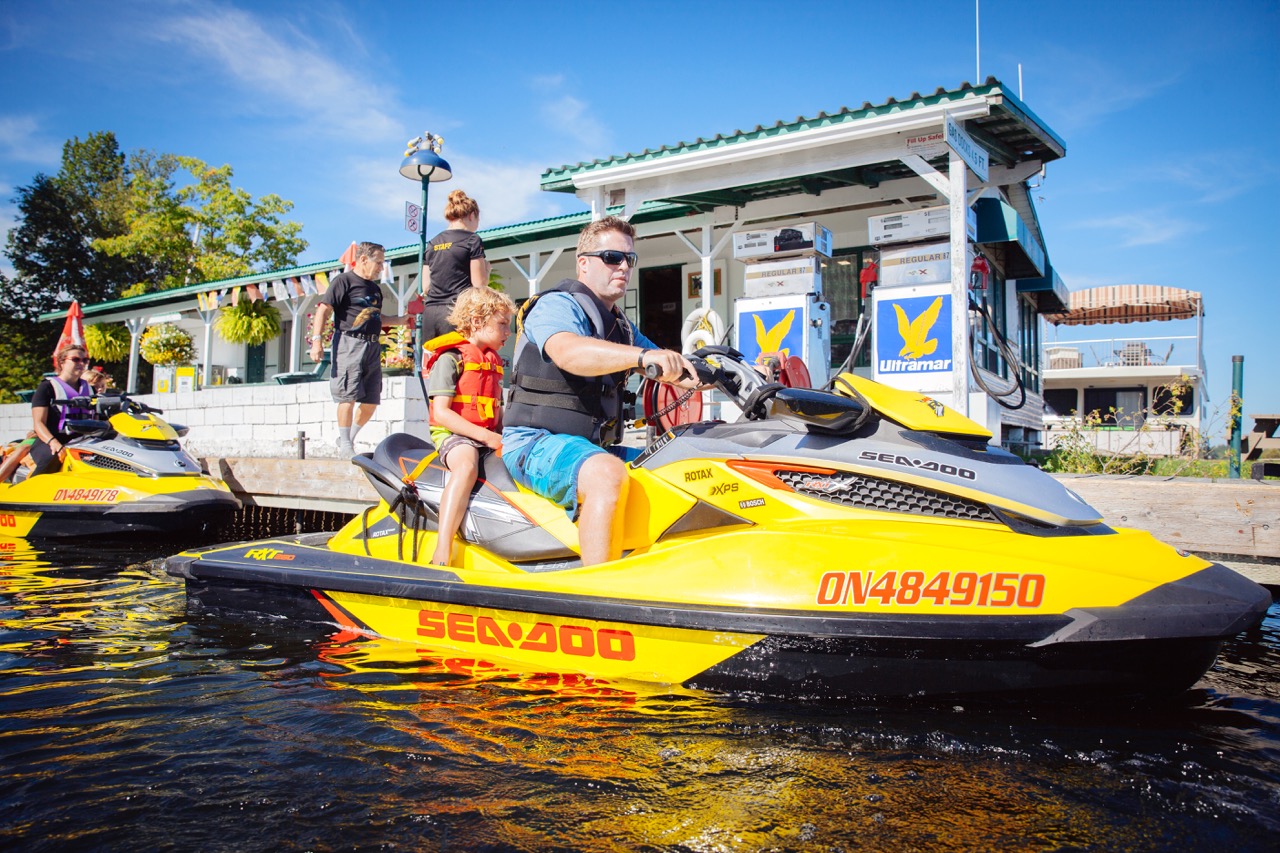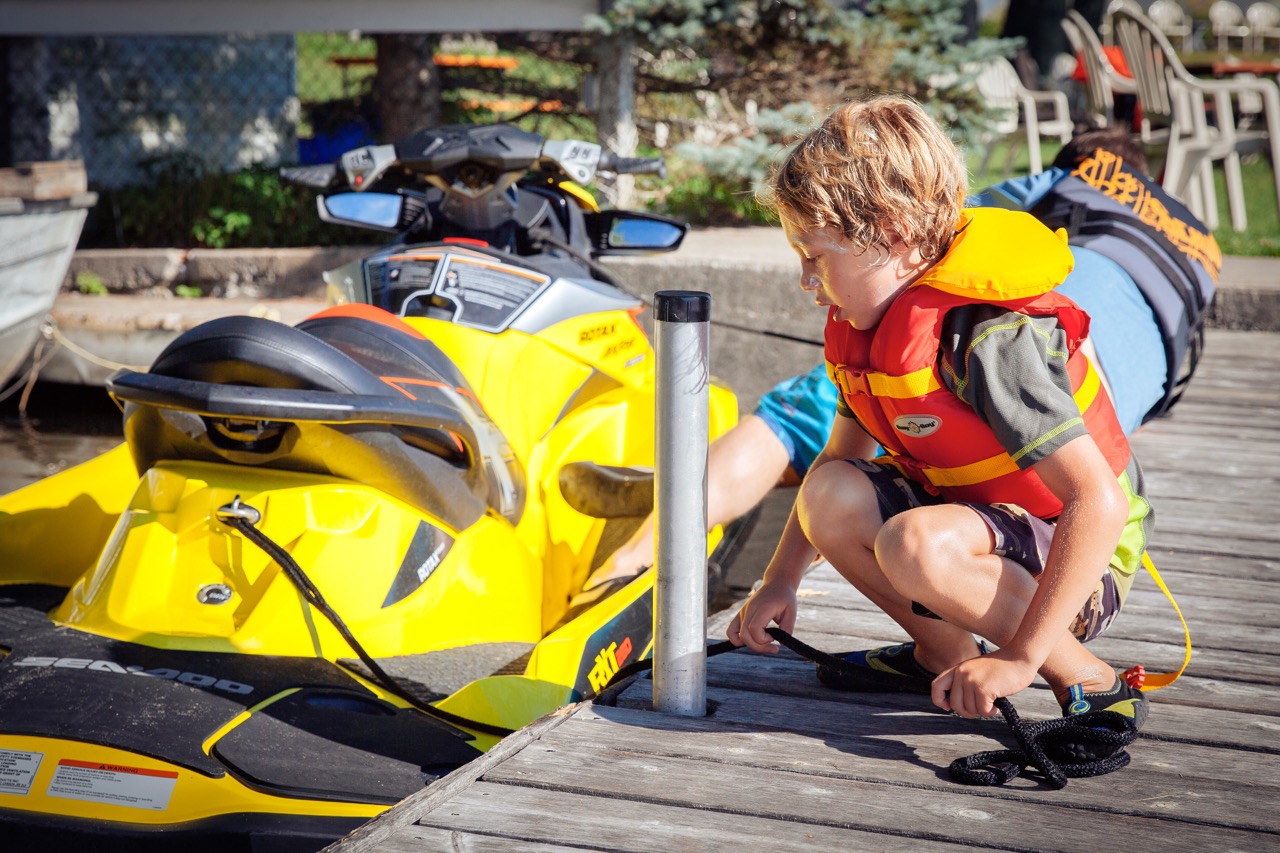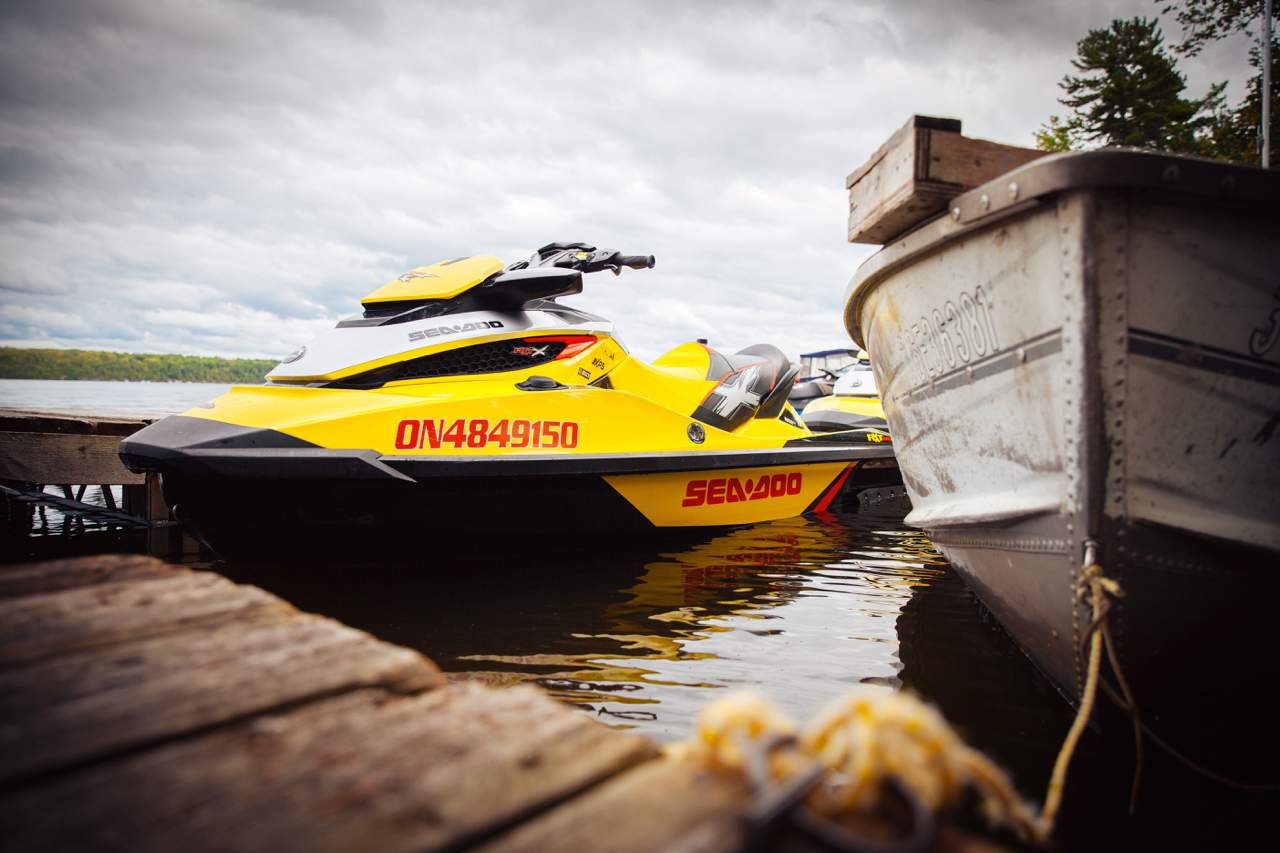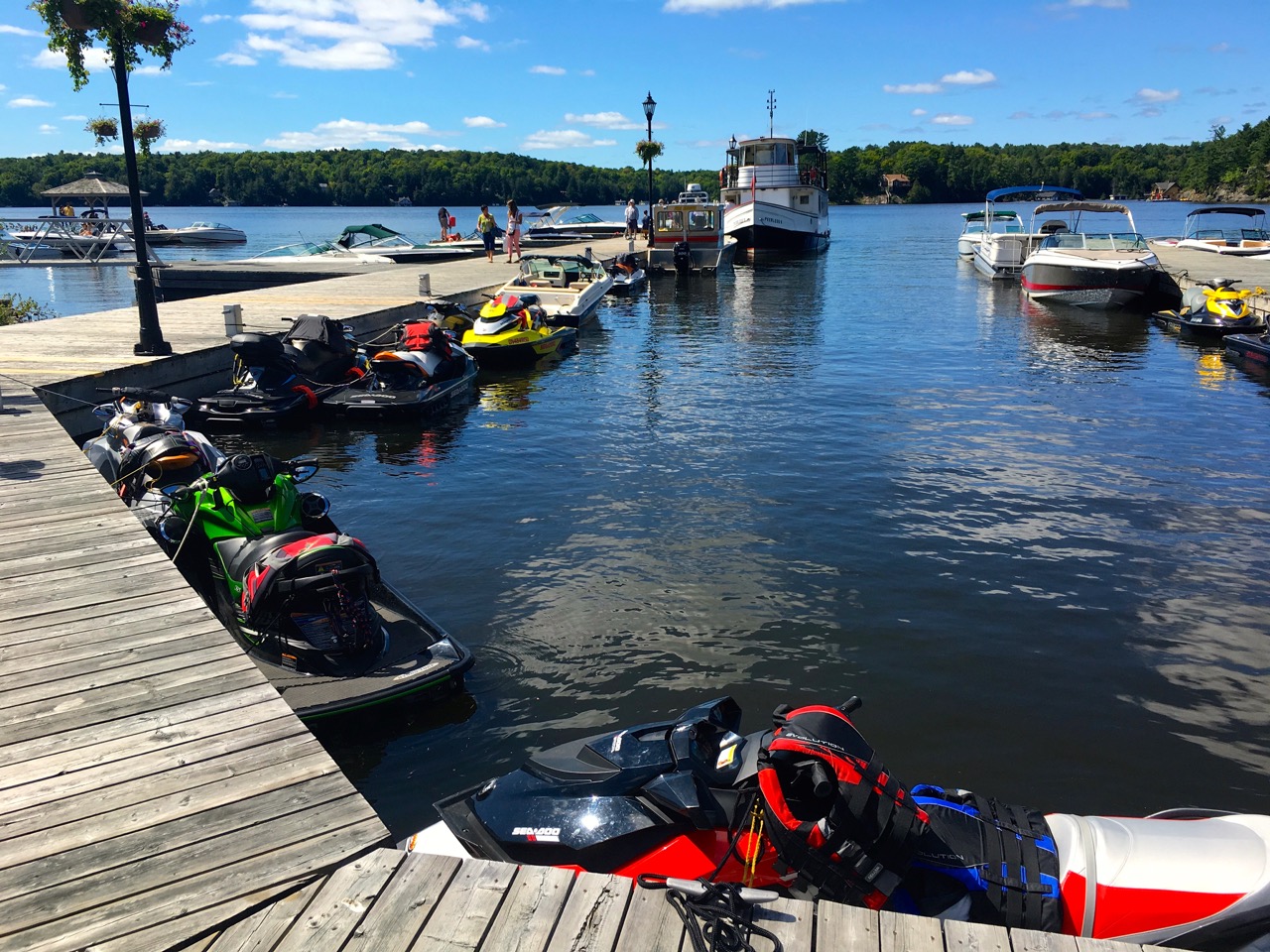How To Acquire Essential Jet Ski Docking Skills…
Related: How To Go Thru Locks
Why are these Sea Doo docking tips important on PWC adventures? Because Sea Doo docking may be the trickiest manoeuvre experienced riders, PWC beginners or renters need to accomplish on a watercraft. Sooner or later, everyone’s going to have to park their Sea Doo, jet ski or waverunner personal watercraft at a dock, pier or wharf. These tips should also help recreational boaters.
Sometimes, it will be one you’re already familiar with. But on Sea Doo tours, you’ll encounter many different and unfamiliar dock locations and configurations. My Sea Doo docking tips can help make you a better jet ski docker. They are also useful for going through locks and after you launch from a PWC trailer.
Sea Doo Docking Operations & Etiquette
Know How Your PWC Operates
Start becoming a better docker by familiarizing yourself completely with how your jet ski operates. Each brand has its own characteristics. Older models may operate differently than current ones. Sea Doo riding with a passenger can also affect operation. But the Sea Doo docking principle remains the same. You need to know exactly how your personal watercraft manoeuvres at slow speed. Plus how to control forward, reverse and turning without hesitation. Note that PWC’s are jet-propelled, so power = control. This is especially true in slow speed situations, where Sea-Doo’s iBR (intelligent Brake & Reverse) and iTC (intelligent Throttle Control) are huge assets.
Practice Manoeuvring
In this case, practice makes perfect. Like the video below recommends, learn how to dock by beginning away from docks, obstacles and other boat traffic. Preferably in an area sheltered from wind, waves and wake. As your capability and confidence grow, move to a dock you’re familiar with. Then practice parallel parking, preferably with someone who’s already proficient to provide advice, guidance. And hopefully prevent any minor bumps and dings. Being competent with manoeuvring your personal watercraft slowly is Sea Doo docking tip number one. But that’s not all you need to know about how to dock watercraft…
Be Aware of Others
Boating etiquette is also important in learning how to dock watercraft. Regardless of your small size, you are a motorized craft just like all the others. So you have with the same rights and responsibilities. But because you are smaller (and more manoeuvrable), it makes sense to exercise more caution and make no wake while coming into any dock. Besides while Sea Doo riding, I prefer being welcomed by other boaters and marina staff to being ostracized for screwing up!
Sea Doo Docking Considerations
It’s also imperative to carefully assess the location and configuration of any unfamiliar dock by answering the following questions. There are a lot of factors to consider simultaneously. But this assessment process will become second nature with practice. And it will help you overcome most docking challenges.
Sea Doo Docking Question 1: Where Are Jet Skis Allowed To Dock?
Many marinas have day slips or transient docks. That’s likely where you should be if you’re just visiting. Often, slips that are apparently empty have already been assigned to other boaters. Also be careful not to block gas docks unless you’re there to fill up.
Sea Doo Docking Question 2: What Shape & How High Is The Dock?
“Dock” can mean anything from a single finger that’s pretty straight forward to an interlocking array that’s much more complex to navigate into. Typically, docks, piers and wharfs are made to accommodate larger vessels that have higher sides than personal watercraft. So you have to be careful not to get any part of your low-slung PWC caught underneath such a dock or in its supporting framework.
Also, try to park in a place where you can get on and off your personal watercraft as easily as possible. And remember, removing your own weight from your jet ski will cause it to rise several inches in the water. So be sure that there’s enough space between the dock and the side of your PWC to avoid damage to your unit when this happens. Another disadvantage of docks being built too high for personal watercraft occurs at a gas dock. Here, the attendant may have difficulty reaching down to get the fuel nozzle into your jet ski.
Sea Doo Docking Question 3: Is The Water Deep Enough For Your PWC?
Most marinas and public docks have enough water depth for larger vessels. So jet ski access usually isn’t an issue. But there may be some areas that are too shallow (which could be why no one else is docked there). Sometimes, marina staff tries to direct PWC’s to spots where bigger boats can’t go. But proceed with caution. Don’t be afraid to say no to any location you think might be shallow enough to interfere with your impeller.
Sea Doo Docking Question 4: Is The Dock Area Weed & Obstacle Free?
Some waters are weedier that others and so are some shorelines. Avoid any obviously weedy area and watch out for unmarked obstacles or floating debris. One clue for spotting weeds or shallows is if aluminium dinghies, paddle boats or canoes occupy an area. None of them need as much clearance underneath as you do. So beware.
Sea Doo Docking Question 5: Are There Buoys or Other Markers To Guide You?
Some docking areas have markers to delineate a channel of approach or to point out obstacles like rocks or shoals to avoid. If in doubt, follow someone else in.
Sea Doo Docking Question 6: Where Can You Tie Up?
Always thinking ahead, you need to assess how you will tie up once you come to a stop at the dock. Most have cleats, rings, boards or poles you can tie to. But not always, so it’s a good idea to carry your own cleats. Also, these are often spaced for larger vessels. So they are too far apart for you to tie both the front and back of your jet ski properly. Securing both ends is important to ensure that your watercraft doesn’t drift out of position and damage itself or other boats.
Sea Doo Docking Question 7: What Direction Are Wind & Waves Coming From?
As you manoeuvre at lower speed, your jet ski is more susceptible to wind, wave or current action. So it’s always good to know whether these forces are pushing you toward or away from the dock. And also how strong they are, so you can compensate with a little extra throttle as needed.
The other wind, wave & current (and wake) consideration is to try to find a sheltered docking location.This is one that’s sheltered enough to protect your jet ski from damage caused by being being bounced around. That’s why I try my best to avoid parking along side any unprotected dock that’s parallel to the shoreline and directly exposed to any of these elements. The land side of such a dock is a better choice.
Sea Doo Docking Question 8: What About Other Docked Boats or Jet Skis?
Obviously, you can’t dock where there’s not enough space. And you have to be careful about inadvertently hitting other peoples’ boats. So where are the empty spots? Is there room between vessels already docked? If you are with another PWC, can you park with one unit alongside the dock and the other rafting beside the first?
Sea Doo Docking Question 9: What About Other Boat or PWC Traffic?
On busy weekends and at crowded summer marinas, there may be a lot of traffic coming and going. Don’t get so fixated on docking that you aren’t at all times aware of what’s moving around you, what direction it’s going, and who has the right of way.
Sea Doo Docking Question 10: What Side of The Dock Is Best?
Based on your spontaneous evaluation of the above, you need to decide if one side (or area) of a dock is better for your PWC than another. Sometimes it’s a compromise. One spot is farther away from shore, but has a lower dock. Or a spot is more sheltered but is harder to get into. My decision usually comes down to what location will best protect and secure my PWC.
Sea Doo Docking Question 11: What’s The Best Angle of Approach?
Again, based on your evaluation of the above, you must decide what your best approach is to get to the spot you have chosen. Ideally, you want to park pointed in a direction that’s best for both entering and exiting. There is no right or wrong answer to this question. Just that with all factors considered, you get the best possible opportunity to dock with the least chance of an unexpected outcome.
Sea Doo Docking Tie Up & Fenders
After you have successfully come to a stop at the dock, you need to do several things at once. Tie up promptly. Protect the dockside of your personal watercraft. All the while holding on to the dock so you don’t drift out of position. That’s why as often as possible, I ready my dock lines (I use 12-footers to more easily reach cleats on higher docks) and fenders before I head into a dock. Just be careful not to dangle a rope into the water where it could get sucked into the impeller. FYI, I use Sea Doo fenders because they snap into place easily. Then they stay there securely to help prevent dings and scratches while I’m still manoeuvring. And they provide a cushion if the side of my jet ski happens to bump the dock. They are also the only fenders I’ve used that have always stayed in place in various conditions and overnight.
After you’ve done it for a while, Sea Doo docking will become easier. But it’s never a no-brainer. As much docking as I’ve done, I always seem to encounter situations that require special attention. And that’s when my mind re-processes my Sea-Doo docking tips to meet any new challenge about how to dock.
Check out my favourite Sea-Doo rides!
If you enjoyed this post, check out my other riding tips.
The tips and advice in this article are the opinions of the author, may not work in every situation and are intended only for the convenience and interest of the reader, who has the personal responsibility to confirm the validity, accuracy and relevancy of this information prior to putting it to their own use.

